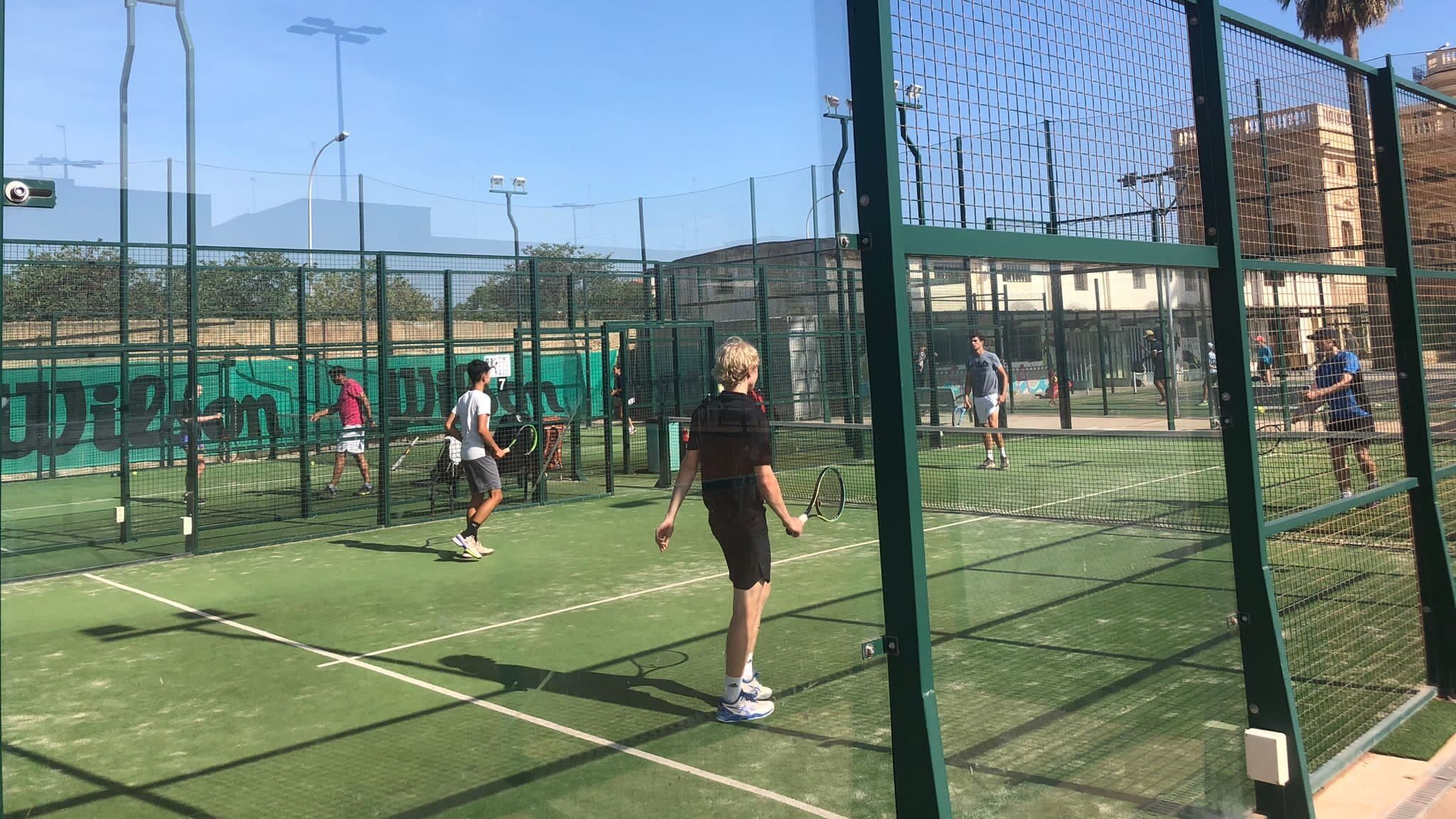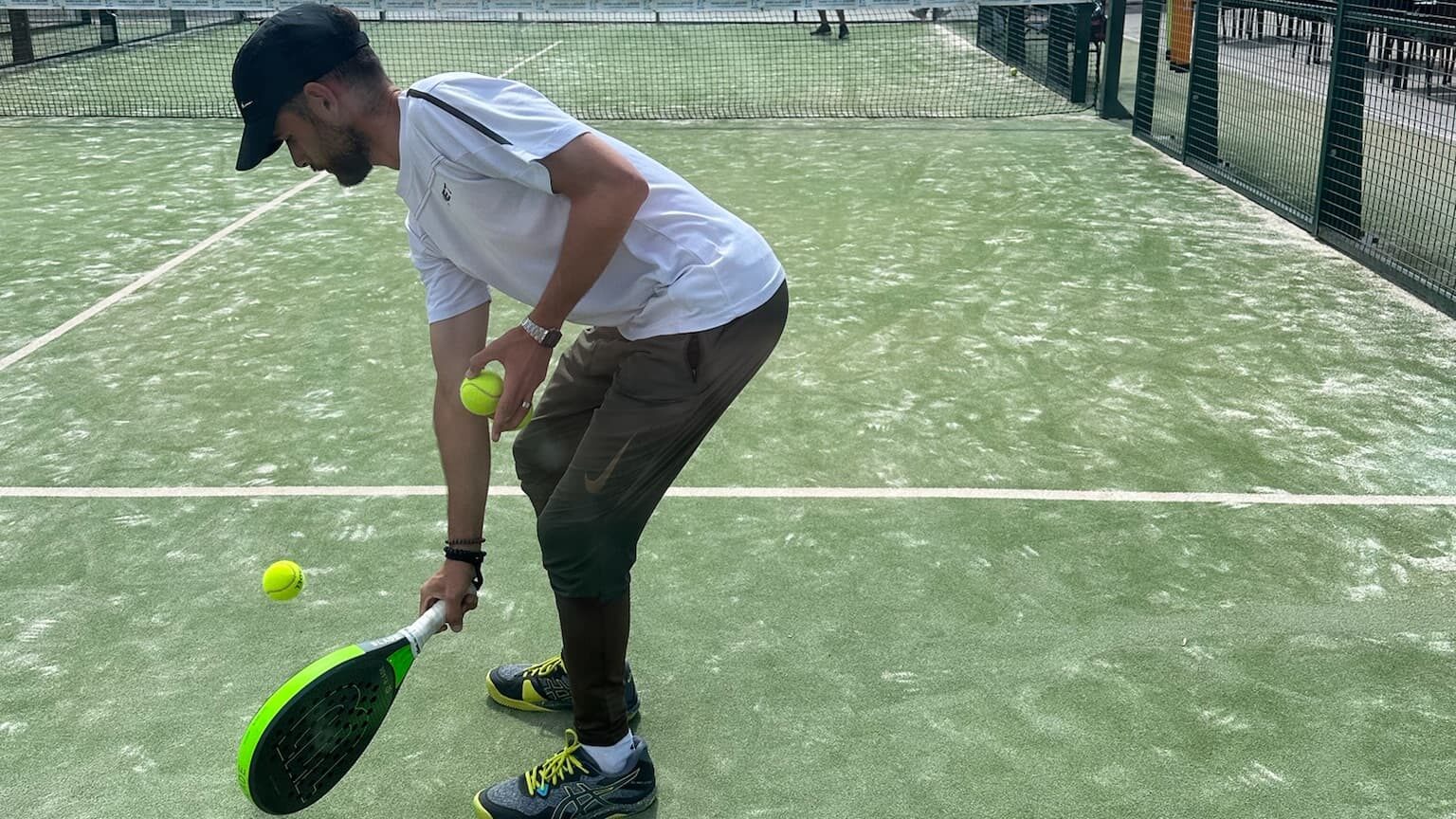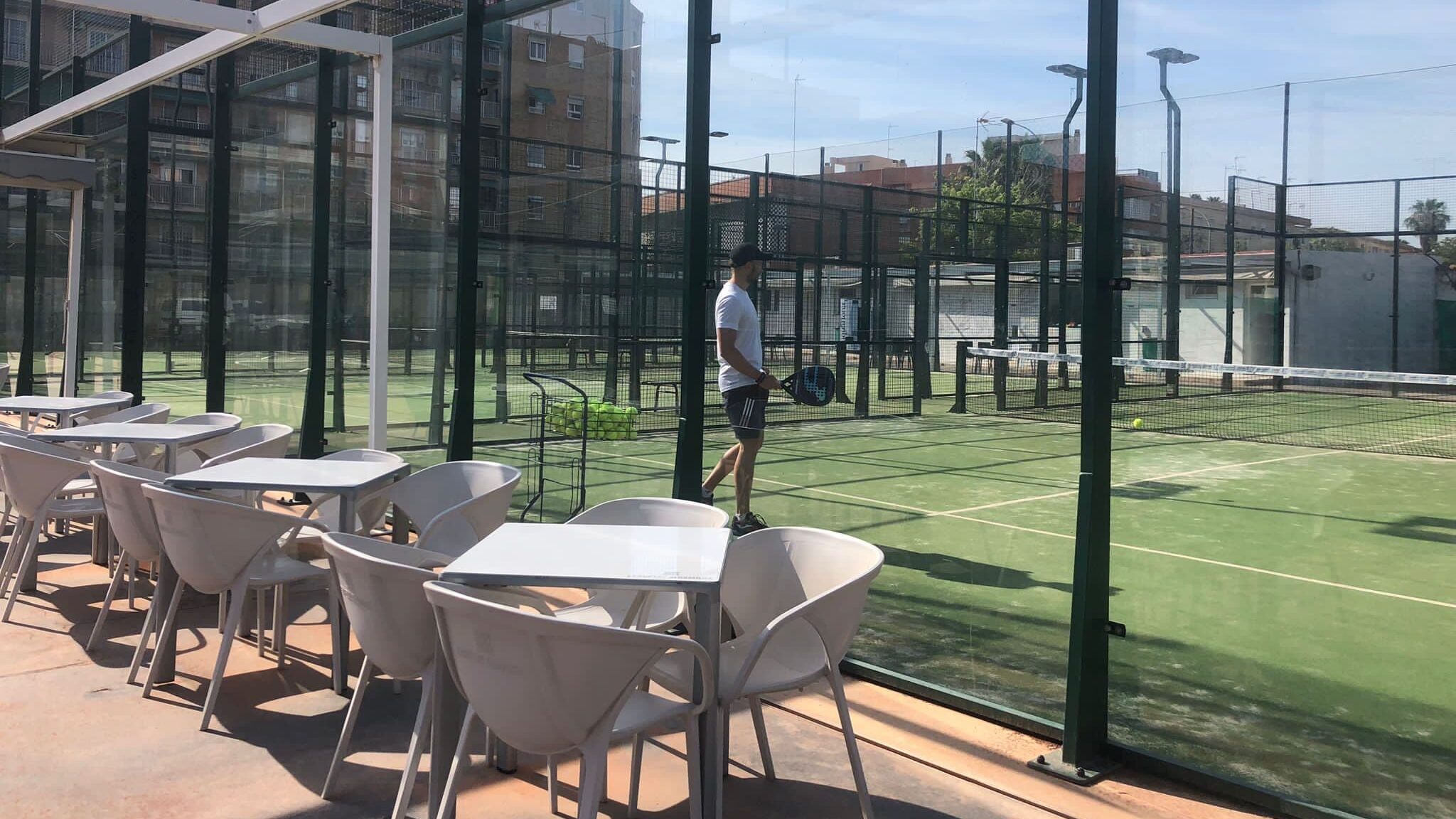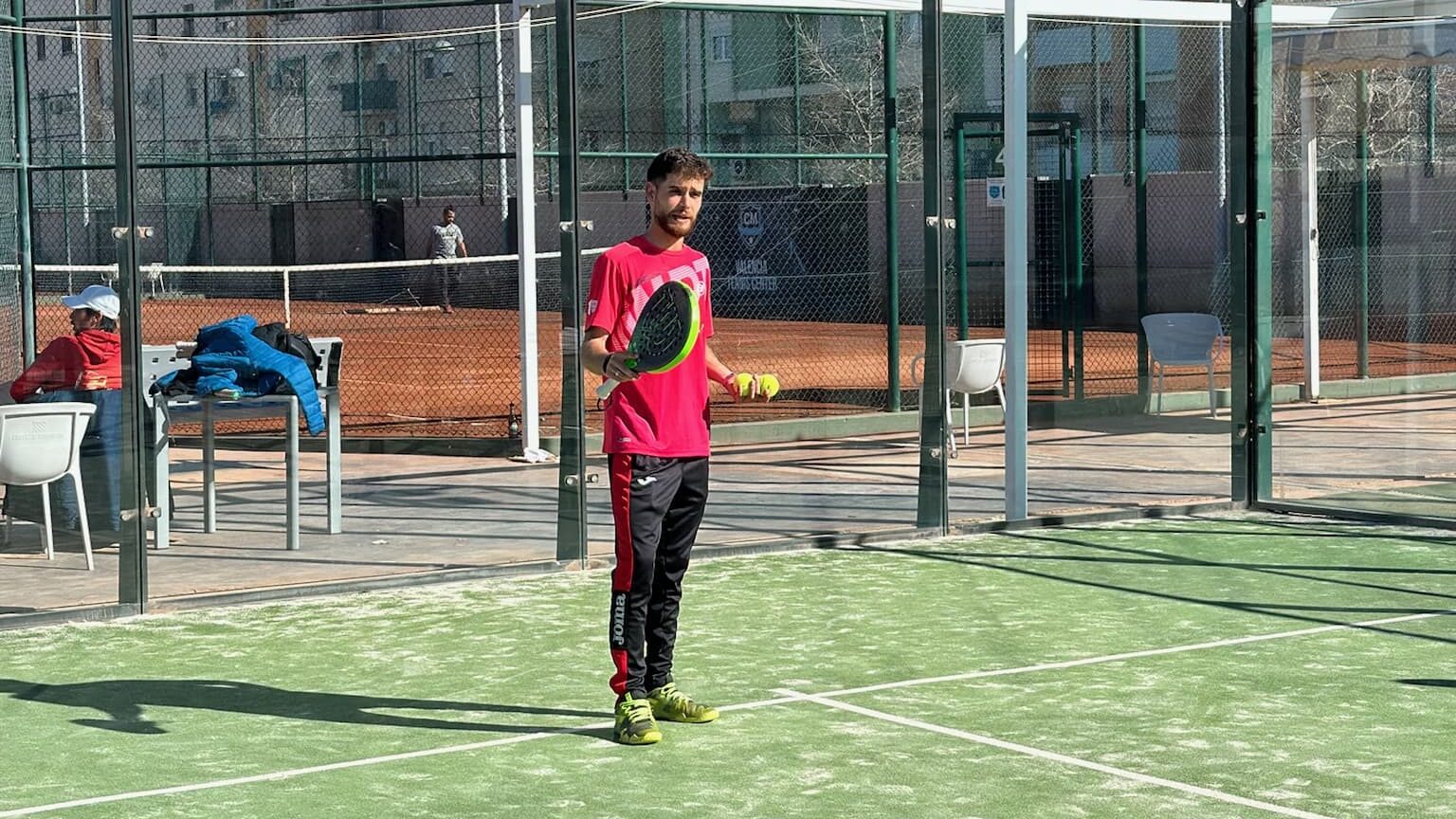Millions of people play the racquet sport known as “padel,” which combines aspects of squash and tennis to create a dynamic and approachable game. Padel, which dates back to the 1960s in Mexico, is usually played in doubles on an enclosed court marginally smaller than a tennis court. The court is designed to resemble a squash court with glass walls and a net. Play involves smashes, volleys, and clever wall placement.
Table of Contents

Padel’s fundamental principles are simple to understand. Like tennis, the ball must be served underhanded and bounced once before being struck. The ball can bounce off the walls, offering a strategic dimension similar to squash, and players can smash it after one bounce or straight up in the air. Tennis-style scoring is used in most matches, which are best-of-three-sets affairs.
This article documents the global rise of Padel’s popularity and progress. We will examine its beginnings, spread throughout different nations, and the elements contributing to its meteoric rise, making it one of the world’s fastest-growing sports.
Historical Background
Origins of Padel
Enrique Corcuera created a padel in Acapulco, Mexico, in 1969. Corcuera created a smaller court surrounded by wire netting and walls to customize squash for his house. He then fused parts of many racquet sports to create a new game that prioritized talent and strategy over strength. Because of its social and entertaining nature, Padel became quite popular quickly among Corcuera’s friends and acquaintances
Spanish royal and businessman Alfonso de Hohenlohe, who was visiting Corcuera, Mexico, quickly became interested in the sport. Impressed by the game’s potential, De Hohenlohe built the first two padel courts at his Marbella Club in 1974, bringing Padel to Spain. Padel subsequently gained popularity in Spanish-speaking nations, especially Argentina, where it attracted a fervent fan base.
Early Adoption and Growth in Spain
Padel was once a pastime favored by the Spanish aristocracy, who valued its social features and accessibility. By the 1980s, it had begun to spread outside private clubs and was progressively becoming more widely available. Public courts and establishing neighborhood padel groups, which made it simpler for people from different backgrounds to play, contributed to the sport’s rise.

In Spain, Padel had become a popular sport by the 1990s. The founding of the Spanish Padel Federation in 1991 established a legal framework for the sport’s growth, standardizing regulations and hosting tournaments. Padel groups sprung up nationwide, and the sport was taught in classrooms, further ingraining it in Spanish culture. Its broad appeal was aided by its exciting, fast-paced gameplay and comparatively low entrance barrier compared to other racquet sports.
Spain is now regarded as the Padel World Center, home to an extensive court network and a vibrant player community. Due in large part to the sport’s popularity in Spain, padel federations and competitions have been established worldwide, contributing to the sport’s global expansion.
Factors Contributing to Global Growth
Influence of Spanish Athletes and Celebrities
The promotion of Padel by Spanish athletes and celebrities has greatly increased its global popularity. Prominent individuals like football players Lionel Messi and Cristiano Ronaldo and former tennis player Rafael Nadal have openly declared their enthusiasm for Padel by participating in contests and using social media to promote the sport. In addition to receiving media attention, their engagement has motivated players to pick up the game. Padel has become more well-known due to celebrities setting up private courts and competing in competitions, attracting a wider audience.

Padel’s Social Aspect
Padel’s friendly nature and simplicity of learning are responsible for its rapid proliferation. Padel is rather simple to learn, making it available to people of all ages and fitness levels, unlike many other sports that require significant skill development. Doubles matches become fun social occasions because the format promotes social interaction, teamwork, and togetherness. Padel courts promote community and frequent social meetings because they are frequently seen in bars and recreation centers. Padel’s social appeal has led to its global expansion, especially among families, corporate teams, and groups of friends.
Institutional Support and Investment
Padel’s growth has been aided by substantial institutional investment and support. Realizing the potential of the sport, sports organizations, private financiers, and local governments have invested in padel infrastructure development, including courts and training centers. Professional leagues, like the World Padel Tour, have been established to provide elite players with a competitive arena that draws media attention and sponsorships. To make Padel more accessible to a larger audience, local governments have also sponsored the sport by constructing community courts and integrating it into public sports programs. This extensive support network has helped the sport grow professionally and at the grassroots level, contributing to its widespread appeal.
Padel’s rise to prominence worldwide can be ascribed to a confluence of factors, including significant institutional investment, innate social appeal, and celebrity endorsements. These elements have combined to turn Padel from a niche sport into a global phenomenon loved by millions in many countries and areas.

Expansion Beyond Spain
Growth in Europe
Padel’s expansion throughout Europe has been remarkable, particularly in Italy, Sweden, and France.
Emergence in Non-European Markets
Padel’s reach has extended beyond Europe, gaining traction in diverse regions, including the United States, Australia, and the UAE.
Padel’s global popularity is highlighted by its spread outside Spain into other European nations and non-European markets. The sport is gaining popularity worldwide because of its intrinsic social and accessible nature, institutional support, and strategic investments.
Role of International Organizations
International Padel Federation (FIP)
An essential part of the global development and marketing of Padel is the International Padel Federation (FIP). FIP, founded in 1991, is the regulatory authority responsible for harmonizing the sport’s regulations to guarantee uniformity and equity in gameplay throughout nations. Among the federation’s major accomplishments are:
National Federations
Within each of their nations, national federations are essential to the formalization and grassroots growth of Padel. Their efforts are concentrated on strengthening the sport’s basis by focusing on five important areas:
The concerted efforts of the International Padel Federation and national federations have made the organized development and globalization of Padel possible. These organizations guarantee the continued success of Padel as a well-liked and professionally run sport worldwide by implementing uniform regulations, hosting contests, and offering extensive development initiatives.
Challenges and Opportunities
Regulatory Challenges
Padel’s international growth has not been without difficulties, mainly regarding facility regulations, official status in new markets, and sports recognition.
Market Opportunities
Despite these obstacles, Padel has a lot of room to grow, particularly for sports equipment producers and new markets.
Padel’s goal of becoming global is not without regulatory obstacles, but there are plenty of chances for growth and development. By carefully resolving these issues and taking advantage of market opportunities, Padel can maintain its status as one of the sports with the fastest global growth rates.

Future Prospects
Integration into Multisport Events
The inclusion of Padel in major multisport events like the Olympics or the Commonwealth Games would be a significant milestone for the sport, enhancing its visibility and legitimacy on a global scale.
Technological Innovations
Advancements in technology have the potential to significantly influence Padel’s accessibility and popularity, making the sport more appealing and enjoyable for players at all levels.
The prospects for Padel are bright, with significant potential for growth and development through its integration into major multisport events and the adoption of technological innovations. By counting on expanding its reach and embracing new technologies, Padel can further solidify its status as a dynamic and globally popular sport.
From its humble beginnings as a backyard hobby in Mexico, pédale has evolved into one of the fastest-growing sports in the world. Since its popularity in Spain, the sport has expanded throughout Europe and beyond, attracting players from various locations, including the US, Australia, and the United Arab Emirates. High-profile athletes’ and celebrities’ endorsements, social and approachable aspects, and significant institutional support and investment are the main drivers of its growth.
The International Padel Federation (FIP) and other national federations have been instrumental in the sport’s growth, putting in countless hours to create the required infrastructure, coordinate contests, and establish rules. Padel’s growth persists despite regulatory obstacles because of the sport’s innate appeal and calculated attempts to get around them.
Padel has a great chance of being included in big multisport competitions like the Olympics and Commonwealth Games in the future, which would further improve its reputation and draw spectators worldwide. Technological advancements in facility architecture, digital interaction, and equipment promise to improve player experience and increase accessibility and enjoyment of the sport.
Padel’s development from a regional innovation to a rapidly expanding international sport is credited to its distinct appeal and the devoted efforts of those who support it. With further development and growth, Padel is positioned to become even more well-known, hitting new heights and drawing a vibrant and diversified player and fan base worldwide.